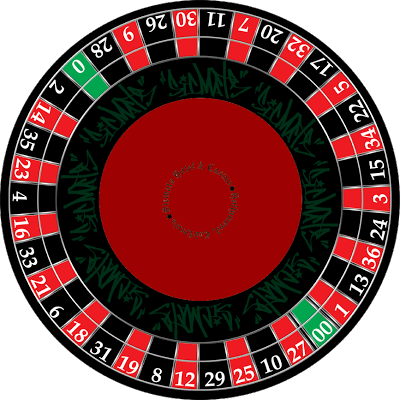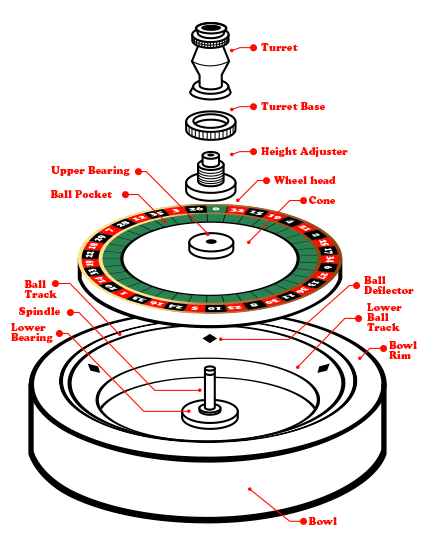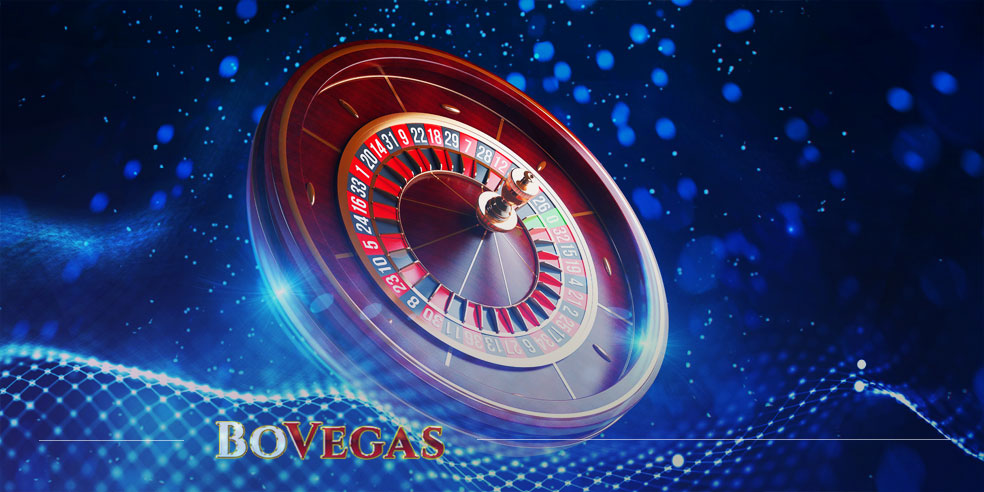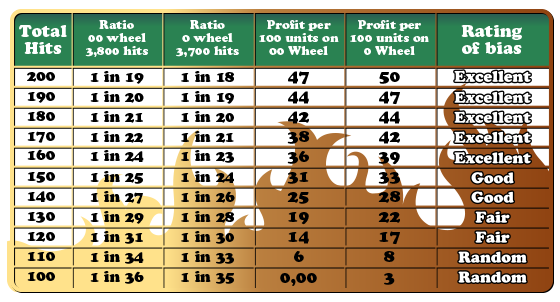How Many Spots On A Roulette Wheel
- How To Read A Roulette Wheel
- How Many Spots On A Roulette Wheel
- How Many Spots On A Roulette Wheel Of Fortune
- How Many Spots On A Roulette Wheel
The theory is that you can clock wheels or spot dealer signatures with enough effort. But due to the roulette wheel’s randomness, you have no chance to truly predict the results. Instead, an electronic device is the only path towards beating roulette with wheel clocking. (Source: Wikimedia.org) Did you know that all the numbers on a roulette wheel (1 to 36), when added together make 666, the Number of the Beast according to the Book of Revelation? I got the idea for writing about this after reading an 888 online roulette article by Frank Scoblete entitled How to Take Advantage of Roulette Hot Spots. In that article, Scoblete recommends taking a count of each outcome for 3,700 spins in single-zero roulette and 3,800 spins in double-zero roulette in the hunt for 'hot numbers.' Decoding the American Roulette When you play the double zero roulette, you’ll notice there are 38 slots from 0 to 36 with double zeros adjoining each slot. Out of 38 slots, 18 are red while the remaining are black. The double zero slots are all green. In order to spot a possible wheel bias, since we don’t own them to make physical measures, we have to recur to statistical analysis of its behavior, and here we really have to use Mathematics. It is necessary to investigate if a roulette wheel does have a behavior which deviates from the expected for a perfect machine, and in order to achieve.
If we’d look back at the whole history of roulette, we might see how many people have tried to find unconventional ways to win the game. Some were pretty illegal, like slipping the bet after the stop of the wheel or somehow controlling the ball or bribing a complacent croupier. But only one method was really successful, spotting a biased roulette wheel.
Finding a bias is like finding the goose that lays the golden eggs. And often players who knew what to look for were able to take advantage of a manufacturing error of the wheel to win big before the casino could realize what had happened. The best thing is that it is not cheating at all. Spotting a bias is somehow considered a skill and you can keep all your winnings. The most famous case is probably that of Joseph Jaggers, a British man who was able to win the today’s equivalent of $5 million on a biased roulette wheel at the casino of Monte Carlo in 1873.
Nowadays it is almost impossible to find a biased wheel due to technology advancement in manufacturing techniques, but it is good to know that a chance actually exists. For instance it may occur when a wheel is not maintained properly and dirt or scratches modify the behaviour of the roll of the ball.
How can you discover a biased Roulette wheel?
That’s indeed not simple. It may take very long time as you must be ready to track the results of the wheel, accurately marking down thousands of spins without arousing too much attention ( you may want to use a lot of our scorecards for this 🙂 ), trying to find patterns that do not seem completely random, analyse variation, etc. If you can do that and spot the bias before the casino management does, huge money can be done. It is probably a lifetime opportunity, so do not waste it!
For the European roulette, a single number wins 1⁄37 and loses 36⁄37. It’s easy to find out that the fair odds for a single number bet is 2.7% ( 1/37 = 0.027 ). It is also possible to know what the edge for the casino is – still 2.7% ( −1×36⁄37 + 35×1/37 = −0.0270 ). Therefore any bias moving the odds on a given number just a bit, maybe to 3%, will turn the edge for the casino into an edge for the player. The kind of advantage any gambler dreams of in his life.
Can even an online roulette have a bias?

The online roulette is completely governed by the rules of statistics. There are no mechanical parts, no air, no friction, no humidity, no croupier that can affect the outcome. Numbers are generated through a RNG (random number generator) processor, probability (i.e. that 2.7% I mentioned before) is hard coded and only a fault in the software can hypothetically generate a bias, that is highly unlikely. If you have ever heard of such a fault it is way more likely that the online casino ownership has voluntarily decided to modify the odds for marketing purposes and create some buzz around its loose roulette. I think you’ll never hear something like this happening in a big and trusted online casino, where rules are very strict and the RNG gets audits and inspections to guarantee fairness.
Roulette is one of the most popular table games in modern casinos. Although variations on the game have been around for several hundred years, there are now only 3 variations in American casinos.
You’re likely already familiar with American roulette and European roulette. The most recent addition to the table game inventory is Sands Roulette.
How To Read A Roulette Wheel
Which of these games should you play?
How should you bet on them?
What’s the smartest strategy for roulette betting?
I’ll explain all that in this post:
How Many Spots On A Roulette Wheel
What Are the Differences between American, European, and Sands Roulette?
Although these games have a few other differences, the most significant distinction between the 3 versions of roulette are the number of green slots the wheels contain.
Every roulette wheel has at least 37 slots.
36 of those slots are always numbered 1 to 36, and they’re alternately colored RED or BLACK.
The additional slots are green.
In European roulette there is only one green slot, the “0”.
In American roulette there are two green slots: “0” and “00”.
In Sands roulette a third green slot, “S”, has been added to the wheel.
The green slots are there for one reason:
They make the game’s statistical probabilities uneven.
This is because of the way roulette bets are paid off. You can win anywhere from 35-to-1 (for betting on a single number) down to 1-to-1 (for betting on 18 slots at a time).
How Many Spots On A Roulette Wheel Of Fortune

The payoffs, called “odds”, are not as fair to you as the actual estimated probabilities of the roulette ball landing on any given slot. This is how the casino makes its money.
In a game of roulette the house should keep at least 2.70% of all the bets players make over time. The casino has no need to cheat the players. In fact, the players often make really bad bets that improve the “house edge”, as that casino profit is called.
One of the other differences between European roulette and both American and Sands roulette is that the European roulette table has an additional betting area. This secondary betting area is used to place specially designed bets. They are more complicated than the normal bets made in American and Sands roulette. I’m going to ignore this section of the table, because I’m going to show you how to place bets that have the best chances of paying off.
Is There a Winning System for Roulette?
Everyone who gets into roulette sooner or later starts to think about how they can “beat the system”.
I’m going to be honest here:
There is no way to do that.
The green slots on the wheel make it impossible for anyone, anywhere, to ever design a betting system that is guaranteed to win. If you really want to guarantee yourself a win every time, then put a chip on each of the 2-to-1 outside bets and on each of the green number bets.
That’s the only way you’ll be paid money every time the wheel spins.
You’ll also go broke.
You may have heard about a system called the Martingale System. It’s a popular betting system with new roulette players.

Experienced roulette players just turn their heads and roll their eyes when someone mentions the Martingale System. The only way you can make money with the Martingale System is to write a book about it and get people to buy your book.
Even that’s a gamble, though, because most people now know that the Martingale System promises more than it delivers.
Here’s how this system works:
You start out betting the minimum. If you lose, you double your bet. If you win on your doubled bet, you go back to betting the table minimum. If you lose again, you double the size of your bet again.
This sounds great to inexperienced bettors but the problem is that you’ll either run out of money or hit the table limit before you can recoup your losses as they add up.
The Martingale System is a sucker bet, plain and simple.
Every betting system in every form of gambling tries to leverage probability theory. The Martingale System and other roulette betting strategies also rely on probability estimates.
But there’s a flaw in the thinking behind these systems. If you account for the flaw you’ll be okay. You won’t always win but your expectations will be more reasonable.

The secret to not going broke when you gamble is to set reasonable expectations and maintain your self-discipline. You should never drink or take drugs when you gamble. They lower your inhibitions and impair your judgment.
You might as well just hand your money over to the casino at the cashier window and say “keep it” if you’re going to drink or do drugs when you gamble.
How Do Probabilities Work in Roulette?
Probability theory came out of statistics. It tries to give us rules by which to guess what happens next in any situation. The guesses are seldom accurate predictions. Sometimes the guesses work out, and sometimes they don’t. Gamblers love probability theory because they think it helps them pick the best betting strategies.
You’re actually more likely to double your money during a roulette session if you put all your money on a single bet. The more bets you place, the less likely it becomes to double your money.
That’s because every bet brings you close to the long term expectations. The closer you are to the short term, the more likely you are to get better than expected results.
In roulette, the probabilities are simple. The dealer spins the wheel and releases a ball that whirls around the outside of the wheel and finally settles in a slot. With only 37 slots on a European roulette wheel you have a 1-in-37 probability of the ball landing on a specific slot.
How Many Spots On A Roulette Wheel
This probability never changes.
This probability is calculated on the basis of all the known possibilities.
What probability theory cannot do, however, is predict where the ball will stop.
Nor can it predict whether the ball will land on red, black, or green any number of times over the next 100 spins.
Nonetheless, a lot of gambling guides tell you that you have the best chances of winning if you do this because of such-and-such probabilities. And many of these guides warn you that there is no way to predict the future, but by setting the expectation that the ball will land on red about 47% of the time, these guides are making predictions and promises they cannot keep.
They’ll even back up their claims by talking about how to run computer simulations for 1 million spins of the wheel so that you see how often the ball lands on red, black, or green.
In the real world the Probability Fairy is always on vacation. She’ll never be there to wave her magic wand to make things happen the way experts say they should. The ball could land on red over the next 20 spins. Or it could land on black or green or some random mix of color combinations.

You have no way of knowing how many of the next [X] spins will turn out a certain way. Talking about probabilities in this way is just dishonest.
What you can do is look at the wheel and ask yourself how much it costs to bet on the largest possible set of numbers. The idea here is to get as much coverage as you can without losing money too fast.
But even if you cover every number on the wheel you’ll lose money.
So the only way to win in roulette–and this is completely random, never guaranteed–is to bet on less than all the numbers on the wheel.
You also want to play bets that pay better than even money. You can place a variety of bets, but most of them aren’t worthwhile.
Betting on single numbers is a bad idea. You can place bets on the lines between the numbers (these are called “street bets”) and on lines at the corners of numbers (these are called “corner bets”).
But even though you get pretty good odds (payoff) you’re still covering too few numbers.
How Bets Work in Roulette
Divide the bets into two groups:
- Inside bets
- Outside bets
Inside bets are based on individual numbers or small groups of numbers. When you see players betting on the lines, corners, and individual numbers on the table they are making inside bets.
Outside bets are based on pre-selected groups of numbers on the wheel. The “2-to-1” bets cover 12 numbers each: 1 to 12, 13 to 24, and 25 to 36. The “1-to-1” or “even money” bets cover 18 numbers each:
- Odd
- Even
- Black
- Red
- 1 to 18
- 19 to 36
The bets more likely to pay are the even money bets.
But unless you can win 5 times out of 9 on even money bets you’ll lose your stake. That’s the problem with roulette. You always have to win at least 1 more time than you lose no matter how you place your bets.
The “2 to 1” bets pay better than the “1 to 1” bets because they cover fewer numbers. You have less of a chance of winning.
There are 6 types of “2 to 1” bets:
- 3 kinds of dozens bets: (1 to 12, 13 to 24, and 25 to 36)
- 3 kinds of columns bets: ([1, 4, 7, 10, 13, 16, 19, 22, 25, 28, 31, 34], [2, 5, 8, 11, 14, 17, 20, 23, 26, 29, 32, 35], [3, 6, 9, 12, 15, 18, 21, 24, 27, 30, 33, 36]).
You can make a bet by betting on any two of the “2 to 1” groups. That means that instead of covering only 18 numbers you’ll be covering 24 numbers.
This type of bet is often called the “double dozen” bet. It’s popular among gamblers who like to hedge their bets. They have a better chance (all other things considered) of scoring a win with a “double dozen” than with one of the standard even money bets. If you’re playing it safe and going for even money odds, you should always play a double dozen bet.
If you want to bet more aggressively, then instead of betting more money on your double dozen, you can cover all 36 of the red and black numbers. Leave the green numbers alone. Yes, they’ll come in every now and then, and you’ll lose money.
But there’s a way to keep your losses low.
How to Bet on Columns or Dozens Aggressively
Take 6 chips and distribute them across EITHER the three dozen bets or the three column bets.
Place 3 chips on 1, 2 chips on the 2nd, and 1 chip on the 3rd. If the ball lands on a green number you’ll lose your entire bet, so always play the table minimum with this aggressive style.
If the ball lands on any number with your single chip bet, you’ll win 2 chips and lose 5–for a net loss of 3 chips (half your bet).
That’s the safest way to bet aggressively on the table.
If the ball lands on any number in your 2 chip bet you’ll win 4 chips and lose 4 for no loss. This keeps you in the game.
If the ball lands on any number in your 3chip bet, you’ll win 6 chips and lose 3 for a net gain of 3 chips. This will offset 1 single chip win.
The way this betting strategy works out, your money can grow substantially and still take some big hits. Where the strategy will fail you is when the ball lands on green or if the ball lands on the single chip bet more often than it lands on the 3 chip bet.
Sorry, but there’s no way to prevent that from happening.
There Is No Guaranteed Way to Win in Roulette
I can’t say this often enough:
You can’t win at roulette in the long run.
I think roulette is a fun game to play. It’s exciting because you don’t know where the ball will land. You take an active role in making your wagers.
And you’ll find there are a lot of different betting systems to experiment with. The only thing that is guaranteed in roulette is that the casino will make a profit. What you hope for is that they make their profit at someone else’s expense.
Players who try to improve their luck by making big bets do sometimes win, but most often the people who come out ahead are the patient players who use conservative betting strategies and take money off the table. If you only walk away with your beginning stake you’ll be luckier than most gamblers.
And you can take that to the bank.